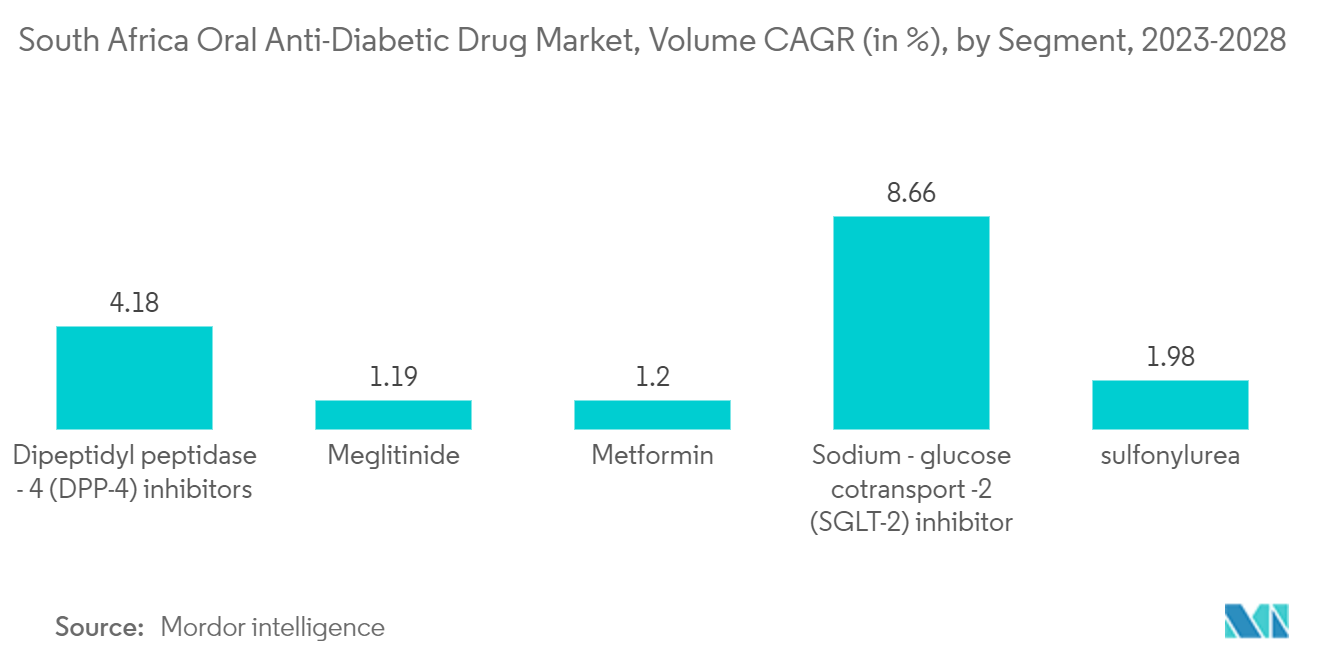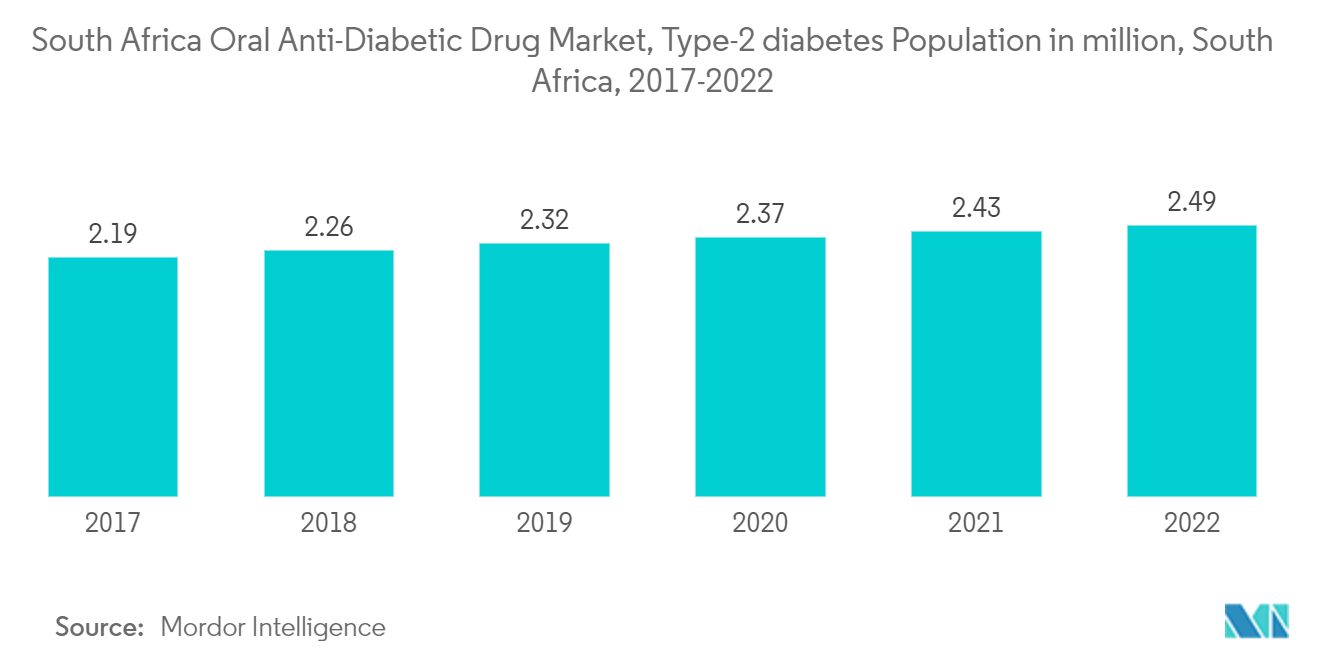Market Trends of South Africa Oral Antidiabetic Drug Industry
Sulfonylureas Segment Occupied the Highest Market Share in the South Africa Oral Anti-Diabetic Drugs Market in current year
In terms of revenue, the Sulfonylureas segment is anticipated to lead the South Africa Oral Anti-Diabetic Drugs Market and post a CAGR of over 1% during the forecast year.
Oral anti-diabetic medications have been made available globally and are advised for usage when type 2 diabetes therapy needs to be escalated along with lifestyle modification. Due to the wide variety of effectiveness, safety, and modes of action, oral medicines are frequently the first treatments employed in treating type 2 diabetes. Diabetes patients can minimize their complications risk and maintain their illness control using anti-diabetic medications. For the rest of their lives, people with diabetes may need to take anti-diabetic medications to manage their blood sugar levels and prevent hypo and hyperglycemia.
Oral anti-diabetic medications have higher acceptability than insulin, improving therapy adherence. They also have the advantages of easier control and cheaper cost. Diabetes is the disease with the quickest rate of growth in South Africa, where there are a lot of diabetic individuals. In South Africa, diabetes is becoming more common among people of all ages, which may be ascribed to an increase in the number of fat people, a poor diet, and a sedentary lifestyle.
Diabetes patients risk significant and even fatal consequences like heart attack, stroke, kidney failure, blindness, and lower limb amputation when undiagnosed or not appropriately controlled. These hurt the quality of life, increase healthcare spending, and make access to treatment more important. Growing knowledge of diabetic treatment, healthcare costs, and technology improvements are a few more variables fueling the increase in diabetes and obesity.
The youth are more likely to get diabetes early due to their younger ages and longer diabetes durations, which lowers their quality of life, reduces life expectancy, and raises societal healthcare expenditures. Educating the populace and promoting wise choices is one of the best strategies to reduce the prevalence of diabetes in South Africa.
South Africa is now pursuing this objective. The South African government has implemented a sugar tax as one of its preventive measures. The government is battling obesity and assisting individuals in making better-informed decisions by raising the price of sugary drinks and meals. A Diabetes Prevention Programme (DPP) was temporarily introduced in South Africa. The DPP seeks to include intervention therapies in a culturally appropriate setting.

The increasing Diabetes Population in South Africa is driving the market.
The numerous organizations in South Africa striving to aid people living with diabetes include Diabetes South Africa (DSA), the Society for Endocrinology, Metabolism, and Diabetes of South Africa (SEMDSA), and Youth with Diabetes (YWD). DSA is a nonprofit organization that focuses on enlisting volunteers to call for improved diabetes care, educates the public, and advocates to the government for better healthcare and more affordable facilities. SEMDSA also investigates the genetic roots and causes of diabetes. Additionally, this group advocates for high treatment standards and broad access to medications.
To reduce out-of-pocket costs and prevent patients from incurring more expenses, the organizations are advocating for allocating a larger budget earmarked for all facets of diabetes care. They are also offering a system for better coordination with the Council of Medical Schemes (CMS), the body in charge of reimbursement. The WHO Global Diabetes Compact prioritizes lowering obesity and expanding access to affordable medical care and medications for the early detection and management of diabetes. These measures are anticipated to raise public knowledge of diabetes monitoring and management, improving market prospects in future years.
The youth are more likely to get diabetes early due to their younger ages and longer diabetes durations, which lowers their quality of life, reduces life expectancy, and raises societal healthcare expenditures. As a result, the market has been driven by increased consumer demand for diabetes care devices and rising adoption rates. Educating the populace and promoting wise choices is one of the best strategies to reduce the prevalence of diabetes in South Africa. This objective is now being pursued by South Africa.
The South African government has implemented a sugar tax as one of its preventive measures. The government is battling obesity and assisting individuals in making better-informed decisions by raising the price of sugary drinks and meals. The Diabetes Prevention Programme (DPP) was started in South Africa. The DPP uses household surveys and meetings for at-risk people to incorporate intervention therapies into a culturally appropriate environment.
Maintaining blood glucose levels within a predetermined target range is one of the key goals of diabetes therapy. It may be done by combining meals with activity, lifestyle, and diabetes medications. Readings from blood glucose monitors give the data needed to choose the optimum diabetes care plan. The frequency with which people with diabetes who use insulin will check their blood glucose levels varies depending on various variables. People with type 2 diabetes who do not use insulin may not require as frequent blood glucose checks, but they may benefit from a period of systematic self-monitoring.


